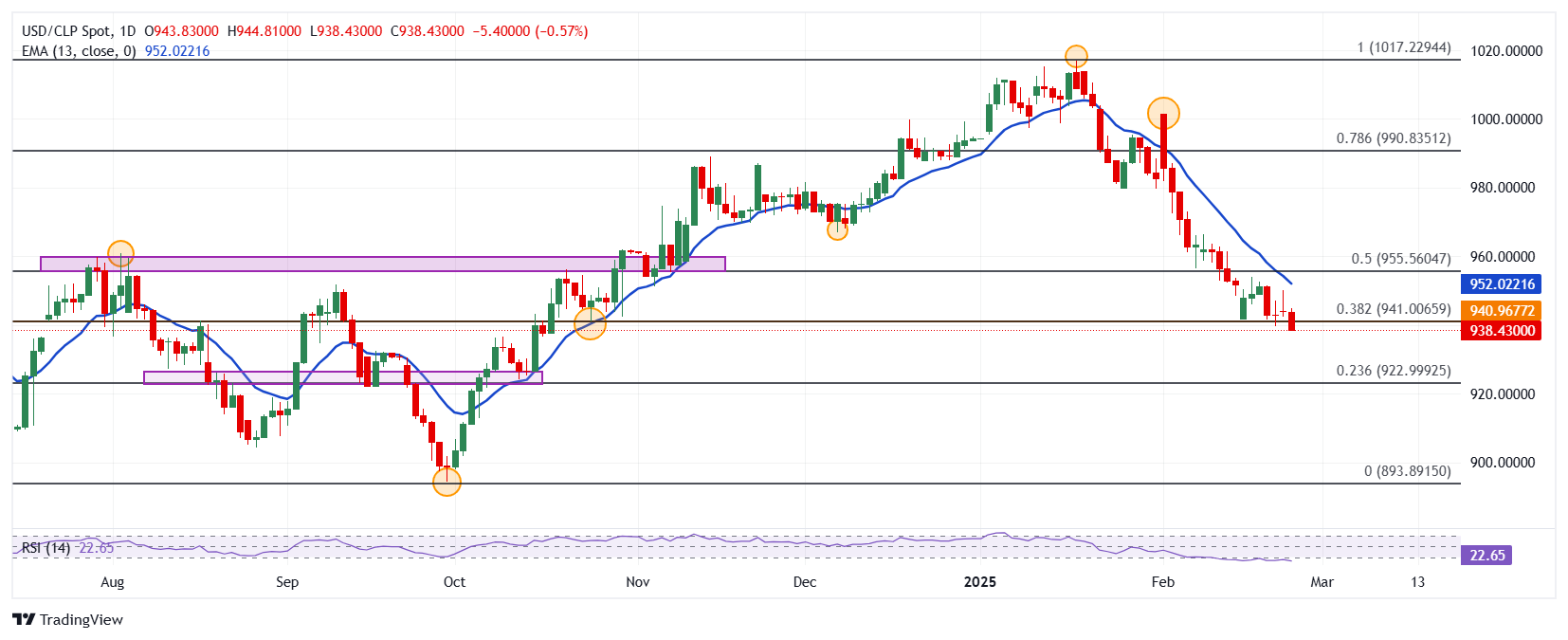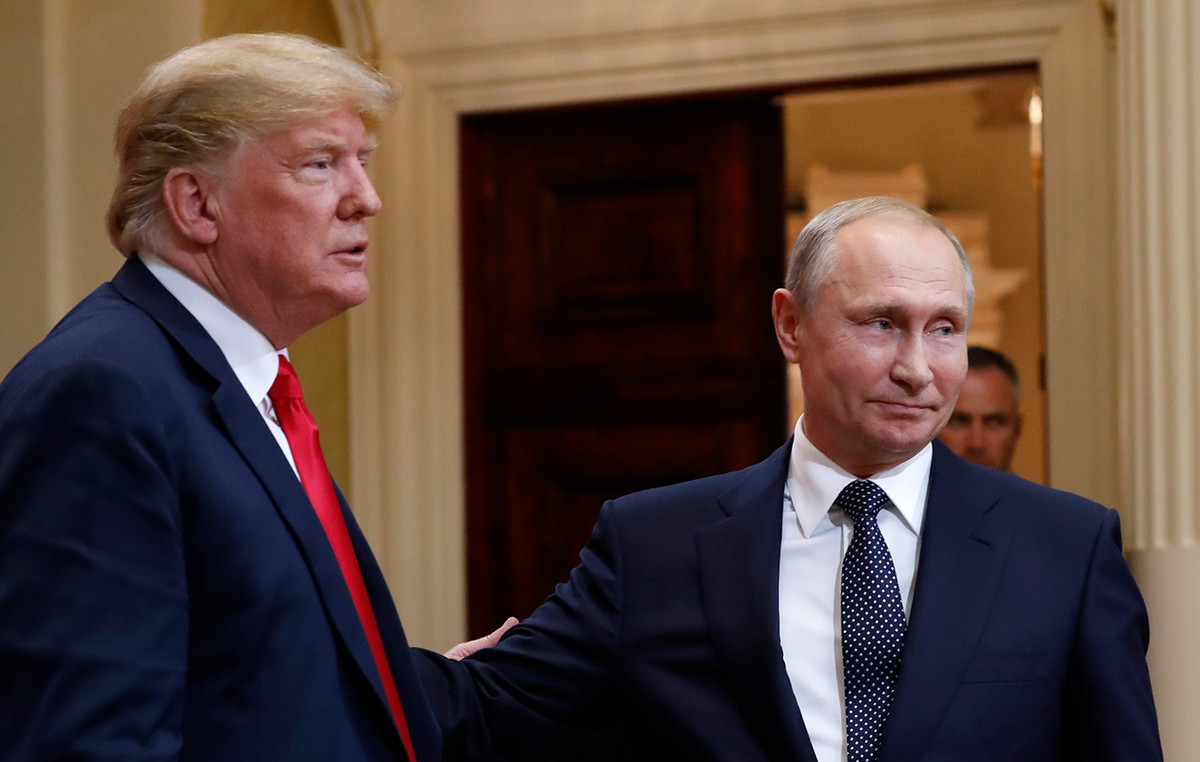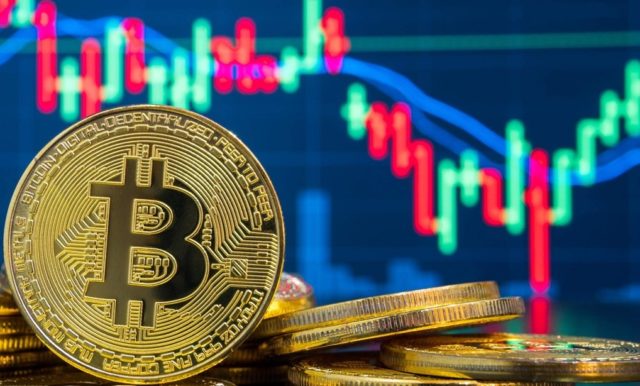- The dollar falls 0.57% in the day against Chilean peso, currently operating at 938.43.
- The dollar index (DXY) goes back 0.26% today, currently quoting 106.39
- The price of copper bounces from minimum of two and a half weeks, winning 0.79% on Tuesday.
- The United States economic agenda contemplates today the confidence of the consumer of February and the speeches of several members of the Fed.
The USD/CLP marked a maximum of the day at 944.81, finding aggressive vendors that dragged parity to a minimum of four months not seen since October 17, 2024 at 938.43. At the moment, the USD/CLP negotiates 938.43, losing 0.57% daily.
Chilean weight can be seen in a rebound in copper prices
The dollar index (DXY) takes up the bearish perspective, registering a fall of 0.33% daily, quoting at the time of writing in 106.31, thus ending with two consecutive days upwards.
On the other hand, the price of copper bounces 0.79% from minimum of February 7 at $ 4,4659 per pound, consolidating within the operational range of the previous session.
In this context, the Chilean peso benefits both by a weaker US dollar and for an increase in copper prices, reflecting in the fall of the USD/CLP to minimums not seen since October 17, 2024 in 938.43.
The look of investors will be concentrated today on the confidence of the US consumer of the Board Conference, as well as in the speeches of Thomas Barkin, Michael Barr and Lorie Logan, members of the Federal Reserve.
Technical levels in the USD/CLP
The USD/CLP reacted down from a short -term resistance given by the maximum of February 3 in 1,001.60. The next important resistance is at 1,017.05, a pivot point of January 17. To the south, the key support area is observed at 894.25, minimum of September 30, 2024.
USD/CLP daily graphics

US dollar FAQS
The US dollar (USD) is the official currency of the United States of America, and the “de facto” currency of a significant number of other countries where it is in circulation along with local tickets. According to data from 2022, it is the most negotiated currency in the world, with more than 88% of all global currency change operations, which is equivalent to an average of 6.6 billion dollars in daily transactions. After World War II, the USD took over the pound sterling as a world reserve currency.
The most important individual factor that influences the value of the US dollar is monetary policy, which is determined by the Federal Reserve (FED). The Fed has two mandates: to achieve price stability (control inflation) and promote full employment. Its main tool to achieve these two objectives is to adjust interest rates. When prices rise too quickly and inflation exceeds the 2% objective set by the Fed, it rises the types, which favors the price of the dollar. When inflation falls below 2% or the unemployment rate is too high, the Fed can lower interest rates, which weighs on the dollar.
In extreme situations, the Federal Reserve can also print more dollars and promulgate quantitative flexibility (QE). The QE is the process by which the Fed substantially increases the flow of credit in a stuck financial system. It is an unconventional policy measure that is used when the credit has been exhausted because banks do not lend each other (for fear of the default of the counterparts). It is the last resort when it is unlikely that a simple decrease in interest rates will achieve the necessary result. It was the weapon chosen by the Fed to combat the contraction of the credit that occurred during the great financial crisis of 2008. It is that the Fed prints more dollars and uses them to buy bonds of the US government, mainly of financial institutions. Which usually leads to a weakening of the US dollar.
The quantitative hardening (QT) is the reverse process for which the Federal Reserve stops buying bonds from financial institutions and does not reinvote the capital of the wallet values that overcome in new purchases. It is usually positive for the US dollar.
Source: Fx Street
I am Joshua Winder, a senior-level journalist and editor at World Stock Market. I specialize in covering news related to the stock market and economic trends. With more than 8 years of experience in this field, I have become an expert in financial reporting.







